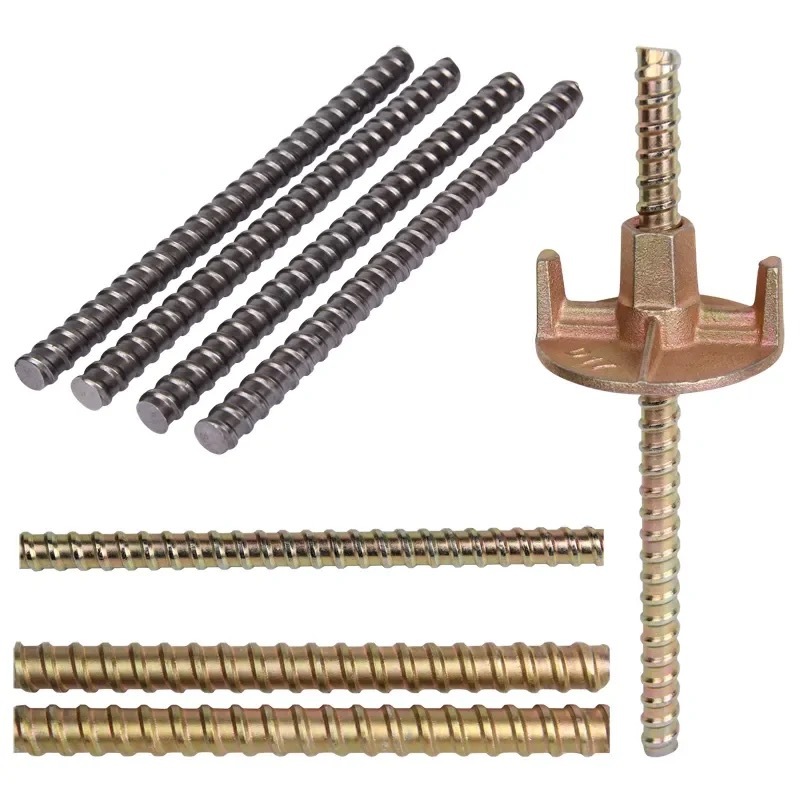How Climate Affects the Use of Steel Formwork in Various Regions
How Climate Affects the Use of Steel Formwork in Various Regions Table of Contents 1. Understanding Steel Formwork 2. The Role of Climate in Construction 3. Temperature Variations and Their Impact 3.1 Hot Climate Challenges 3.2 Cold Climate Considerations 4. Humidity Levels and Steel Formwork Performance 4.1 Effects of High Humidity 4.2 Low Humidity Issues 5. Regional Weather P

How Climate Affects the Use of Steel Formwork in Various Regions
Table of Contents
1. Understanding Steel Formwork
2. The Role of Climate in Construction
3. Temperature Variations and Their Impact
3.1 Hot Climate Challenges
3.2 Cold Climate Considerations
4. Humidity Levels and Steel Formwork Performance
4.1 Effects of High Humidity
4.2 Low Humidity Issues
5. Regional Weather Patterns and Formwork Adaptation
5.1 Tropical Regions
5.2 Arid Regions
5.3 Temperate Regions
6. Best Practices for Using Steel Formwork in Different Climates
7. Future Trends in Steel Formwork and Climate Adaptation
8. Frequently Asked Questions about Steel Formwork and Climate
9. Conclusion
1. Understanding Steel Formwork
Steel formwork is a critical component in modern construction, allowing for the creation of concrete structures with precision and durability. Its applications range from residential buildings to large-scale infrastructure projects. The choice of steel as a material for formwork offers several advantages, including strength, reusability, and adaptability to various designs. However, its performance can be significantly influenced by climate conditions, which can vary dramatically from one region to another.
2. The Role of Climate in Construction
Climate plays an essential role in all aspects of construction, from the materials used to the methods of implementation. Understanding how factors like temperature, humidity, and precipitation influence the construction process is vital for optimizing the use of materials like steel formwork. Different climates can dictate not only how steel formwork is manufactured and transported but also how it is set up and removed.
3. Temperature Variations and Their Impact
Temperature is one of the most significant climatic factors affecting the use of steel formwork. Extreme temperatures can impact the curing process of concrete, the integrity of the steel itself, and the safety of the construction environment.
3.1 Hot Climate Challenges
In hot climates, temperatures often exceed 35°C (95°F). High temperatures can cause rapid evaporation of water from freshly poured concrete, leading to issues such as surface cracking and reduced tensile strength. To mitigate these risks, it is essential to implement cooling measures, such as using chilled water for mixing concrete and scheduling pours during cooler parts of the day. Steel formwork must also be checked for warping or distortion caused by prolonged exposure to heat.
3.2 Cold Climate Considerations
Conversely, in cold climates where temperatures can drop below freezing, challenges arise regarding the curing of concrete. Cold weather can slow down the hydration process, leading to incomplete curing and weaker concrete. To address this, contractors may need to use heated enclosures or insulation blankets around the steel formwork. Additionally, the steel itself can become brittle in extreme cold, making careful handling and inspection critical.
4. Humidity Levels and Steel Formwork Performance
Humidity is another essential element to consider when using steel formwork. High humidity can promote the formation of rust on steel surfaces, while low humidity can affect the curing of concrete.
4.1 Effects of High Humidity
In regions with high humidity, moisture accumulation can lead to corrosion of steel formwork, which may weaken its structural integrity and increase maintenance costs. To combat this, protective coatings and regular inspections are vital. Additionally, proper ventilation during the curing process can help reduce moisture-related issues.
4.2 Low Humidity Issues
On the other hand, low humidity levels can lead to rapid drying of the concrete mix, causing cracking and shrinkage. To counteract these issues, contractors should implement curing compounds that retain moisture and consider using wet burlap or plastic sheets to cover the concrete after pouring.
5. Regional Weather Patterns and Formwork Adaptation
Different geographical regions exhibit unique weather patterns, which require tailored approaches to using steel formwork effectively.
5.1 Tropical Regions
In tropical climates, high temperatures combined with significant rainfall present unique challenges. Construction schedules may need to be adjusted to avoid heavy rain, and formwork materials must be treated to resist corrosion due to humidity and exposure to moisture.
5.2 Arid Regions
Arid regions, characterized by low humidity and high temperatures, necessitate careful management of moisture during the curing process. Techniques such as misting and using evaporation retardants in the concrete mix can help ensure adequate curing and prevent cracking.
5.3 Temperate Regions
Temperate climates experience a mix of conditions, which means that steel formwork must be versatile. Construction teams should be prepared for both hot and cold spells, necessitating thorough planning and the use of adaptable materials that can withstand fluctuating temperatures.
6. Best Practices for Using Steel Formwork in Different Climates
To optimize the use of steel formwork across various climates, implementing best practices is essential.
- **Conduct Regular Inspections**: Ensure that all formwork is inspected regularly for signs of corrosion, warping, or damage.
- **Utilize Protective Coatings**: Apply protective coatings to steel formwork to minimize corrosion risks, especially in humid environments.
- **Implement Proper Curing Techniques**: Use curing compounds and moisture retention methods to foster optimal curing conditions for concrete.
- **Plan Construction Schedules Wisely**: Adjust construction schedules based on seasonal weather forecasts to minimize disruptions caused by extreme weather conditions.
7. Future Trends in Steel Formwork and Climate Adaptation
As climate change continues to influence weather patterns, the construction industry must adapt to new challenges. Innovations in steel formwork technology, such as the development of corrosion-resistant materials and advanced insulation methods, can enhance performance across varying climates. Emphasis on sustainability and eco-friendly practices will also play a crucial role in shaping the future of construction materials.
8. Frequently Asked Questions about Steel Formwork and Climate
**Q1: How does high humidity affect steel formwork?**
High humidity can lead to corrosion of steel surfaces, weakening the formwork and requiring more frequent maintenance.
**Q2: What are the best practices for using steel formwork in hot climates?**
Utilize chilled water in concrete mixing, schedule pours during cooler parts of the day, and implement cooling techniques.
**Q3: How can I prevent concrete from drying too quickly in low humidity?**
Use curing compounds, wet burlap, or plastic sheets to retain moisture during the curing process.
**Q4: What is the impact of cold temperatures on steel formwork?**
Cold temperatures can slow down the curing of concrete and make steel more brittle, necessitating careful handling and protective measures.
**Q5: Are there specific coatings recommended for steel formwork in humid climates?**
Yes, protective coatings designed to resist corrosion and moisture should be applied to formwork in high humidity environments.
9. Conclusion
In conclusion, understanding how **climate affects the use of steel formwork** is essential for successful construction practices across different regions. By taking into account temperature variations, humidity levels, and regional weather patterns, contractors can implement strategies that enhance the performance and longevity of steel formwork. As the construction industry evolves with changing climate conditions, staying informed about best practices and innovative solutions will ensure that projects are completed efficiently and effectively, regardless of environmental challenges.
Key words:
PRODUCT SEARCH
Search And Quickly Find The Products You Need
With advantages in technology, quality, and service, the company is steadily advancing in the industry, continuously providing high-quality hydraulic rubber products and services to global customers, demonstrating strong development potential and broad market prospects.










